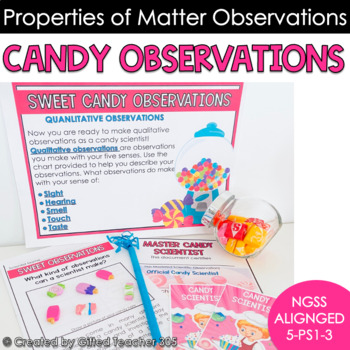- PDF
Description
Are you looking for a fun and highly engaging observations lab? Are you looking for a low prep activity to teach properties of matter? This properties of matter lab is the answer! Your students will learn to use their five senses and science tools to make qualitative and quantitative scientific observations. They will use science process skills to make qualitative observations with science tools. Then they will use their five senses to make qualitative observations. By making scientific observations of candy this memorable classroom transformation will have students fully immersed.
NGSS STANDARDSD PRACTICED
5-PS1-3 Make observations and measurements to identify materials based on their properties.
WHAT’S INCLUDED?
- Student identification cards
- Center direction posters
- Student booklet
- Candy place set
- Class banner
- Student certificate
- Black and white version of all of the above
- Total of 30 pages
This is meant to work like a simulation where the students work as quality control candy makers. It has two lab activities in which students will make two different types of scientific observations.
If you like this classroom transformation science lab you will love these:
Changes in States of Matter Lab: Making Butter
Physical Properties of Matter, Physical and Chemical Changes Room Transformation





